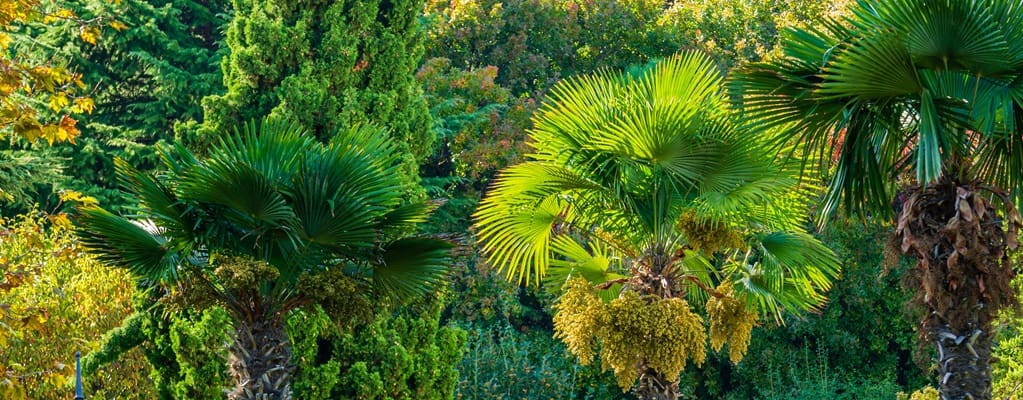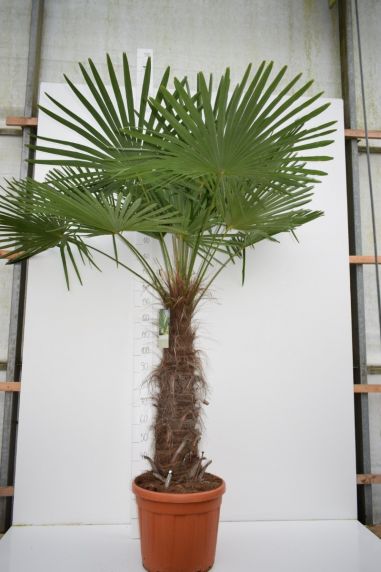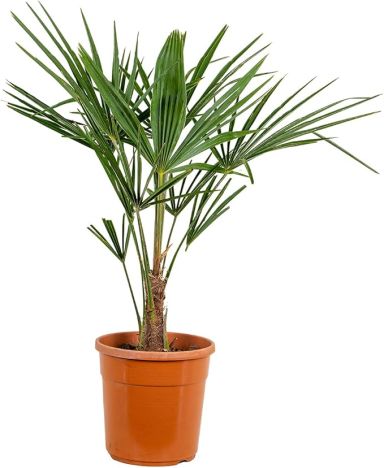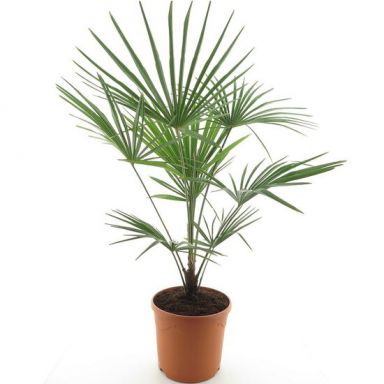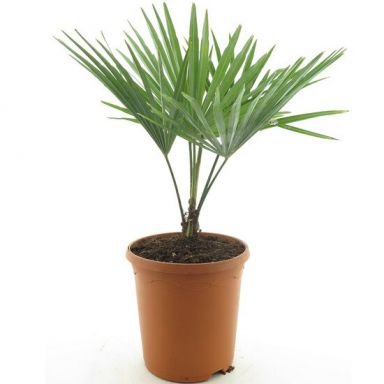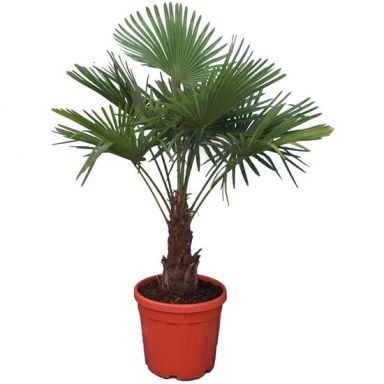Trachycarpus fortunei – Hardy Chinese Windmill Palm from the Specialist
The Trachycarpus fortunei, also known as the Chinese Windmill Palm or Hemp Palm, is one of the most popular hardy palm trees in Europe. With its elegant, fan-shaped leaves, sturdy trunk, and fresh green colour, it instantly adds an exotic touch to any garden or patio. Even in cooler European climates, this palm remains a true eye-catcher – and even more so when in bloom. Order now from MyPalmShop and benefit from our 25+ years of experience, carefully selected quality, and fast delivery across Europe.
Origin and hardiness
In its natural habitat, the Trachycarpus fortunei grows in the mountainous regions of China, where winters can be severe. This makes it naturally resistant to cold. Without protection, this palm is hardy down to around -17 °C. With proper winter protection, it can withstand even lower temperatures, depending on the material used and local conditions. Protection should always be with breathable materials (such as fleece or jute) and only applied for short periods – remove as soon as the weather allows.
Location and soil
The Trachycarpus fortunei thrives best in a sunny to partially shaded, sheltered position. Avoid exposure to cold easterly winds, which often cause the lowest perceived temperatures in Europe. A well-draining soil is essential to prevent root rot. Palm soil from MyPalmShop has been specially formulated based on our expertise to ensure optimal drainage and nutrients.
Planting and care
- Best planting period: May to July. Planting after July is also possible, but apply a mulch layer (e.g., old leaves or bark) around the base for protection.
- Water: water more frequently during dry spells, but avoid waterlogging.
- Feeding: use our slow-release palm fertiliser for healthy growth and lush foliage. Easy to use and developed from our years of experience.
Additional product recommendations
- Trachycarpus wagnerianus – ideal for windy locations.
- Butia capitata or Jubaea chilensis – feather palms that can tolerate some frost.
- Palmbooster – promotes fast and strong root development.
Why choose MyPalmShop?
- ✅ Over 25 years of experience with palms and exotic plants
- ✅ Wide range in various sizes and trunk heights
- ✅ Carefully packaged for fast and safe delivery
- ✅ Thousands of satisfied customers via Trusted Shops
Order your Trachycarpus fortunei today
Want to enjoy a strong, hardy palm with an exotic appearance for years to come? View our current selection of Trachycarpus fortunei and choose the size that suits your garden or patio. Order online now and receive your palm carefully packaged and quickly delivered to your door.
Frequently asked questions about Trachycarpus fortunei
Which size Trachycarpus fortunei should I choose?
This depends on how large you want it to be. Most mature specimens have a span of 1–1.5 metres. Smaller sizes do not yet have this spread. If you have limited space, choose a pot size of 26 or smaller.
Is a Trachycarpus fortunei suitable for my garden?
Yes, almost any garden can accommodate this palm, provided there is enough light and well-draining soil. For windy sites, the Trachycarpus wagnerianus is a better option.
How quickly will my palm be delivered?
Orders are usually dispatched within a few working days. We pack each palm with great care so it arrives in top condition.
What is the ideal position for the Chinese Windmill Palm?
A sunny to partially shaded spot, preferably sheltered from easterly winds. Warmth and shelter encourage better growth and leaf quality.
What type of soil does the Trachycarpus fortunei need?
Well-draining soil to prevent root rot. Palm soil is ideal, or improve existing soil with drainage-enhancing materials.
Can I still plant the palm after July?
Yes, but apply a mulch layer (such as old leaves or bark) around the base for extra root protection.
